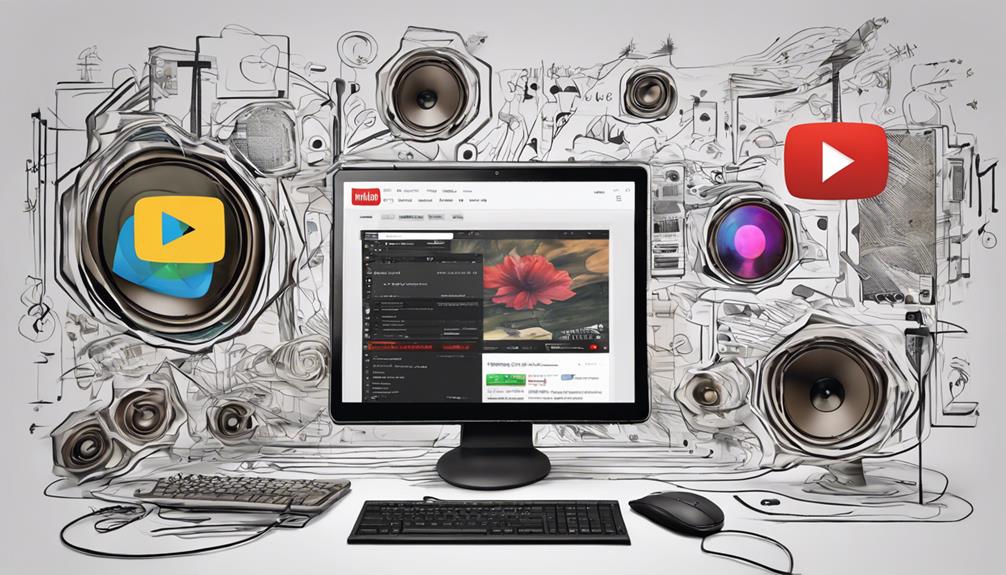When a prospect asks, “Can you explain these numbers?”, they are not really questioning your arithmetic—they are testing whether you are the kind of firm that hides things. Price, in other words, is the fastest proxy for trust. Below is a research‑backed playbook for turning that awkward pause into a moment of credibility—and, ultimately, loyalty.
Why price clarity is a revenue lever, not a concession
- Cost transparency lifts willingness to buy. Harvard Business School experiments show that when retailers reveal production costs, purchase intent rises significantly—even if the final price remains the same.
- Understanding the math increases conversion by 34 %. User‑experience research summarised by Nielsen Norman Group found that consumers are one‑third more likely to complete a purchase when they can easily see how the price is put together.
- Loyal customers created through openness spend 67 % more and stick around after bumps in the road.
- Opacity erodes trust fast. Uber’s switch to opaque “up‑front pricing” boosted profits but fuelled academic criticism by showing take‑rates above 50 % on some rides—an object lesson in how hidden margins invite reputational risk.
Bottom line: Transparency is not charity; it is a measurable driver of revenue resilience.
The psychology behind the hesitation
- Information asymmetry – Buyers fear you know something they don’t (true cost, scope creep probability, margin).
- Loss aversion – Overpaying feels twice as painful as paying the “right” amount feels good.
- Fair‑process bias – People judge outcomes by the perceived fairness of the method. If they understand the rules, they accept the result—even when the number is high.
A six‑step transparency framework
| Step | What to do | Credible cue you can show |
| 1 Acknowledge | Mirror the concern: “Fair point—let’s unpack this together.” | Psychological safety; reduces defensiveness. |
| 2 Provide clarity | Break the fee into labour hours, third‑party costs, risk buffer, margin. | One‑page cost‑build worksheet. |
| 3 Share the process | Explain how you priced (hourly, milestone, value‑based). | Flowchart or slide showing logic chain. |
| 4 Reinforce value | Quantify the upside of action vs. cost of delay. | Simple ROI/payback calculator. |
| 5 Update regularly | Send micro‑updates on scope, hours, assumptions before they ask. | Shared change‑order log. |
| 6 Build relationship | Tie fees to outcomes, revisit quarterly. | ‘Fee vs benefit’ slide showing realised gains. |
Research link‑in: Experiments on cost disclosure confirm that unpacking component costs increases perceived fairness and purchase intent.
What this looks like in the room
- Diagnosis first.
“Besides the total, what else feels unclear?” This isolates whether the real issue is cash flow, hidden extras, or internal politics. Sales coaching studies find that isolating the true objection shortens deal cycles. - Segment the number.
Break €97 k into setup (€35 k), monthly licence (€27 k), and success bonus (€35 k). Smaller digestible parts reduce sticker shock. - Anchor with two benchmarks.
“Typical range for projects of this complexity is €85‑110 k; we’re at €97 k because we include end‑user training.” Benchmarking shows you are within norms—not inventing numbers. - Flip to risk of inaction.
“A 60‑day slip costs €140 k in lost contribution—1.4× our fee.” Loss‑aversion framing moves the conversation from price to impact. - Offer choice, not discount.
“Option A: full scope at €97 k. Option B: drop the automation module and land at €82 k.” People value agency more than automatic concessions.
Toolkit you can deploy this week
| Asset | Purpose | Build time |
| Cost‑build worksheet (PDF) | Makes component costs visible; kills “black‑box” suspicion. | 1 h |
| ROI calculator (spreadsheet) | Lets the client plug in their real numbers; spits out payback period. | 2 h |
| Shared scope‑change log | Date‑stamped adjustments; no surprise invoices. | 30 min |
| Quarterly value review slide | Connects fees paid to benefits realised; keeps the trust narrative alive. | 30 min/quarter |
Case spotlight: Uber’s transparency dilemma
Uber’s migration to algorithmic up‑front pricing in 2022 quadrupled its share price and produced its first annual profit. But Columbia Business School analysis shows the company’s take‑rate quietly climbed from 32 % to 42 %, exceeding 50 % on some trips. The very secrecy that boosted margins also triggered driver protests and consumer scepticism—reminding us that “profit without perceived fairness” is a fragile equilibrium. The lesson for B2B sellers: opacity can pay in the short term, but it writes reputational debt that eventually comes due.
Common traps to avoid
| Trap | Why it backfires |
| Over‑justification | A fire‑hose of cost data feels defensive. Share the logic, not your entire general ledger. |
| Automatic discounts | Train buyers to distrust the first number; erodes margin discipline. |
| Hidden “fees & surcharges” | Consumers rate such practices as the most unfair form of pricing—worse than simply charging more. |
| Radio silence during execution | A mid‑project surprise forces clients to assume the worst. Transparency is an ongoing behaviour, not a one‑off reveal. |
Putting it all together
- Make your math visible. If you can’t show the cost‑build on a single page, the model is too complex.
- Speak in outcomes. Tie every euro to risk avoided or revenue unlocked.
- Stay ahead of the questions. Proactive updates keep you in the driver’s seat of the narrative.
- Review value, not invoices. Quarterly “fee vs benefit” recaps remind clients why they chose you.
Do this consistently and something remarkable happens: the negotiation shifts from “Why so much?” to “How fast can we start?” Because once clients understand the price—and, more important, the story behind it—they stop treating you like a cost centre and start seeing you as a growth partner.
Transparency is not a line item; it is a strategy. Firms that master it do not just close deals—they compound trust, loyalty, and lifetime value.
Below is a concise evidence brief plus a practical playbook you can apply the next time a prospect hesitates over your numbers.
⸻
Why “price clarity → trust → revenue”
Finding Key number Source
Disclosing the real cost drivers (labour, materials, overhead, margin) raised purchase intent 20 % in controlled experiments.
Cost‑transparency boosts purchase intent because it makes the firm appear more trustworthy; the effect holds even when the price is higher than expected.
When consumers clearly understand how pricing works they are 34 % more likely to buy and tend to spend more.
Loyal customers created through openness spend 67 % more and stay after negative experiences.
The opposite side: opaque, algorithm‑driven pricing at Uber drew academic criticism and reputational damage, illustrating how quickly trust evaporates when buyers suspect hidden charges.
Take‑away: price transparency is not a “nice‑to‑have”; it is a measurable revenue lever and a hedge against churn.
⸻
Six‑Step Trust Framework (linked to research & best practice)
Your Step What to Add or Emphasise Evidence hook
1 Acknowledge Pause, then mirror the exact wording of their concern (“Sounds like you’d like a clearer picture of the cost drivers — fair?”). This activates psychological safety. HubSpot guidance on pausing + mirroring
2 Provide Clarity Show the inputs (scope, expertise, risk buffer). Use a one‑page cost‑build worksheet so the maths is visible. Harvard “Lifting the Veil” study: cost disclosure → higher intent
3 Share Process Explain how you arrived at the figure (hourly model, value pricing, etc.). Even if the model is complex, the logic chain must be simple. Perceived price fairness rises when the reason for each increment is explained
4 Reinforce Value Quantify the delta: cost of delay, cost of failure, upside at stake. Use “return‑in‑months” instead of percentage ROI; it’s stickier. Close CRM’s “refocus on the problem” tactic
5 Update Regularly Agree a change‑order protocol in writing. Send micro‑updates (progress, hours, assumptions) before they have to ask. Transparency during execution strengthens loyalty
6 Build Relationship Tie pricing to outcomes in their language; invite them to co‑design success metrics. Over time, review value delivered vs fees paid. Long‑run loyalty economics (67 % higher spend)
⸻
In‑the‑moment objection handling (script stack)
1. Align & probe
“Totally fair. Besides the number itself, what else feels unclear?”
Purpose: uncovers whether the issue is budget, hidden costs, timing, or stakeholder politics.
(Close CRM recommends isolating the real barrier)
2. Segment the price
Break it into three buckets (setup, recurring, success bonus). Smaller digestible chunks reduce sticker shock.
3. Benchmark fast
Provide two anonymised market references (“Typical range for projects of this complexity is €85‑€110k; we’re at €97k because…”) to show you are within norms, not inventing numbers.
4. Flip to risk of inaction
“If launch slips 60 days, conservative modeling shows €140k in lost contribution — that’s 1.4× our fee.”
Anchors the conversation around business impact, not invoice size.
5. Offer choice, not discount
“Option A: keep full scope at €97k. Option B: drop the automation module and land at €82k.” People value control more than concession; many pick the original scope.
⸻
Operational tools you can deploy this week
Tool What it does Effort
Cost‑build worksheet One‑page PDF breaking down labour hours, third‑party costs, margin. Removes “black‑box” fear. 1 h
ROI calculator (spreadsheet) Client plugs in their real numbers → outputs payback period & NPV. Turns abstract value into maths. 2 h
Scope‑change log Shared Google Doc; every adjustment is date‑stamped and costed in real time. < 1 h
Quarterly value review Slide with three KPIs and “fee vs benefit” ratio. Keeps pricing narrative alive after the sale. 30 min/quarter
⸻
Watch‑outs
• Opaque algorithms or hidden “fees & surcharges” erode trust quickly (see Uber case) and invite regulatory scrutiny.
• Over‑justification can backfire. Voluntary transparency works; transparency that feels forced or defensive does not.
• Automatic discounts teach buyers to distrust the first price. Hold the line; trade value, not margin.
⸻
How I personally handle pricing objections
1. Diagnose with one or two clarifying questions (goal: isolate the real concern).
2. Reveal the cost‑build on a shared screen; I let silence do the work.
3. Re‑anchor on business outcome, often by sharing a single slide that maps €1 spent with me to €X saved or earned.
4. Present two scope variants so the client, not I, makes the trade‑off.
5. Follow with an email recap that documents the discussion, the numbers reviewed, and any next steps.
— Clear, calm, and consistent; defensiveness never appears because transparency is baked in, not bolted on.
Put these elements in place and you will find that the “awkward pause” disappears; clients may still negotiate, but they do so on the merits, not from suspicion.










